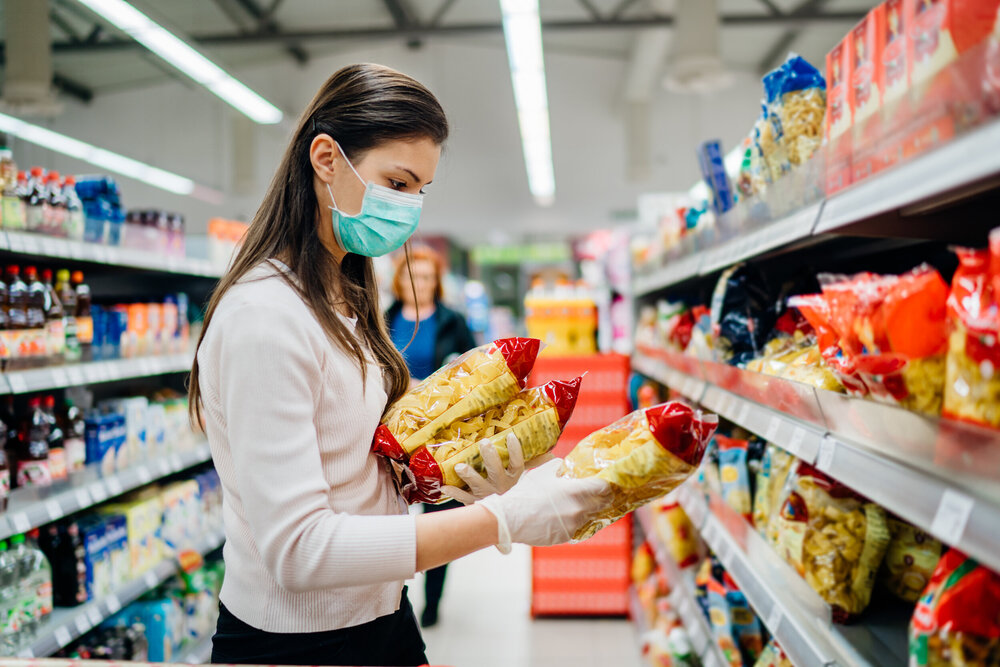Sylvain Charlebois: Food Prices in Canada Remain High

Despite a negative inflation rate, recent StatsCan numbers are telling us that we are in for a wild ride at the grocery store. The numbers are also telling
by Sylvain Charlebois – Retail Insider
While the general inflation rate sits at -0.2%, the food inflation rate is at 3.4%. In December 2019, Canada’s Food Price Report forecasted a food inflation rate of about 4% for 2020, and this is very much where this year is heading toward. But COVID-19’s economic shock will likely be long lasting and will affect grocery shoppers’ pocketbooks for quite some time.
In Canada, inflation has not been an issue for the past decade. It came close to 4% in 2011 and that is about it. Not much excitement there. We have seen some decoupling between the general and food inflation before, but nothing like this. Food prices are increasing almost 4 times more rapidly than the price of any other durable goods in the economy. Now, the Consumer Price Index is not reflecting the actual costs households are facing due to lockdowns. We are all consuming differently. Still, the difference between the two is huge.
“COVID-19 is making everything more expensive to produce, process, distribute, retail, everything”
In March, the initial shockwave was real rather than financial, and it impacted industry and the rest of the economy directly. Food service, a sector which generates more than $90b of revenues a year in Canada, essentially disappeared almost over night. Lockdowns forced the entire food industry to adjust quickly to a change in our economy. That shock was swiftly transmitted to the demand side, as households were hit by layoffs and lower incomes. Financial markets were then hit hard by the uncertainty, not knowing when the pandemic and lockdowns would end. Unlike other recessions where a slowdown is triggered by a shift in demand which leads to subsequent market pressures to cut supply. That is what our textbooks tell us. COVID-19 is essentially a one-two punch to the system; whereas, both sides of the economy, supply and demand, were hit hard. There is no textbook for that. The recovery’s sequence is hard to predict, with more than 8 million Canadians who have applied for the Canadian Emergency Recovery Benefit (CERB).
Once confinement measures loosen up and Canadians can go out, shop, visit restaurants, and do other normal activities to support the economy, the question is whether Canadians will show up. If lingering fears of contagion and of a possible second wave and uncertainty about household incomes prevail, the likely outcome is deflation or at least a price drop for most things. ‘Deflation’ is likely the scariest word for any economist. It is like cancer to an economy. Hard to end deflation and grow an economy when consumers know that what they want to buy today will be cheaper tomorrow. That could impact clothing, cars, houses, you name it. Taxes will go up, putting more pressure on consumer demand. So economically, let us hope Canadians do their part when allowed.
Food though will likely buck the deflationary trend for an extended period. Unlike what many analysts have often said, the food sector is not recession-proof as consumers will either trade down or will not go out as much. But with COVID-19, nobody has been going out to restaurants, and consumers have not really celebrated their lockdowns over caviar either. Most of us went back to basics, cooking, baking, and making bread. Consumer demand has now a COVID-19 benchmark. Deflation or not, we need to eat.
Yet on the supply side, COVID-19 is making everything more expensive to produce, process, distribute, retail, everything. New cleaning protocols, higher salaries, building infrastructure for e-commerce to accommodate consumers who no longer want to physically grocery shop, all will cost more. Plant shutdowns and food safety issues are the last things the food industry needs. With online shopping being more popular, delivery costs will also need to be covered by consumers, whether we like it or not. Food has always been a high-volume, low-margin business and that is not going to change. For industry, covering the cost to produce and distribute food, and asking consumers to pay more will not change either. COVID-19 is impacting the entire planet, so we cannot import our way out of this scenario either.
As a result, we could see the average Canadian family devote a much greater percentage of their budget on food. Pre-COVID, roughly 9% of our budget was devoted to food. It is one of the lowest percentages in the world. That could rise to 11% or even 12% by 2022. In fact, given lockdowns, that percentage is likely much higher right now. In comparison, Americans are at 6% or 7%, whereas, Europeans will spend about 15%. Their percentage will likely change as well. In 1970, Canadian households were spending 21% of their budgets on food. So, in a sense, we are going back in time.
Simply put, current food economics are overwhelmingly forcing us to revisit the social contract we have with food, perhaps for the betterment of society. Valuing food has only positive socio-economic implications. Current food economics are making us more attuned to what is happening around us foodwise. It is also making us more food literate. Such a shift in food prices are relative to what else is going on in the economy and will leave many behind as food insecurity levels in many parts of our country will soar. Single parents, children, and underprivileged demographic groups, will require more attention as we embark into a new food era.
However, there is a silver lining. Since March, even if food prices have been rising, most households are spending less on food. Each household in Canada is saving approximately $5 a day by just cooking at home and avoiding restaurants. That is roughly more than $345 since the beginning of the beginning of the pandemic, which far exceeds price hikes shoppers needed to absorb during the same period.
Any way we look at it, COVID-19 will have a long-lasting impact on our relationship with food, and no one is immune to that.
Dr. Sylvain Charlebois is Dean of the Faculty of Management at Dalhousie University in Halifax. Also at Dalhousie, he is Professor in food distribution and policy in the Faculty of Agriculture. His current research interest lies in the broad area of food distribution, security and safety, and has published four books and many peer-reviewed journal articles in several publications. His research has been featured in a number of newspapers, including The Economist, the New York Times, the Boston Globe, the Wall Street Journal, Foreign Affairs, the Globe & Mail, the National Post and the Toronto Star. Follow him on twitter @scharleb













